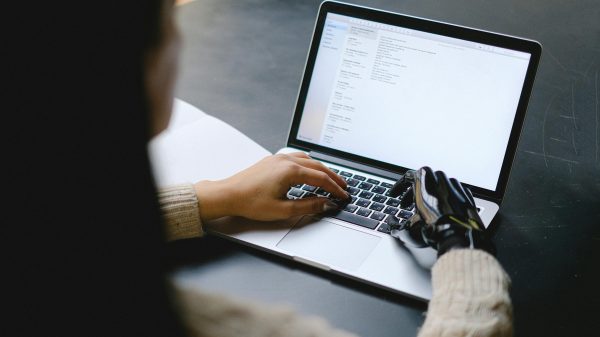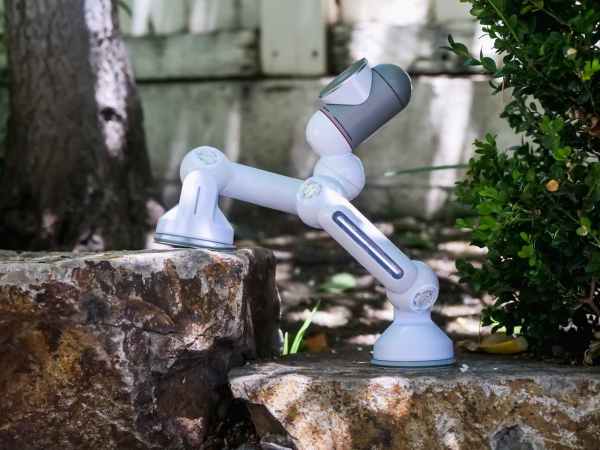Today, astronauts continue to suffer the consequences of the lack of gravity: muscle weakness, increased risk of tendonitis, heating of body fluids and increased muscle density are some of the most common problems. For this reason, space agencies from different countries are constantly designing space robots to reduce the physical risks to astronauts and to continue discovering new advances.
What are space robots?
Space robots, rovers or mobile spacecraft are electronic systems specifically designed to assist or even replace humans on space missions. They are created so that their physical form, size and the materials they are made of are robust and can perform all kinds of tasks with high precision and flexibility, such as moving through complex terrain in extreme conditions.
They generally use artificial intelligence (AI) to be able to make decisions based on automation. Thanks to the use of state-of-the-art technologies, they can solve unforeseen events just as a human being would. They have long since become the best tool for obtaining valuable data in real time to learn about the characteristics of the unexplored, report findings and avoid putting astronauts’ lives at risk. These explorers allow the scientific community to learn new facts about the universe and how it was formed, and other questions such as the existence of water on other planets.
Characteristics of space robots
Mobile spacecraft are designed to withstand extreme conditions outside the Earth, and therefore share a number of characteristics. Firstly, their mechanical and electronic components are built to withstand the maximum dynamic pressure and aerodynamic stresses of the space launch and landing processes.
In addition, robotics engineers create each device taking into account the conditions and needs of the space project, such as weather constraints, lack of energy resources or the type of scientific research to be performed.
Once they start working on the space mission for which they have been designed, these robots can transmit all the data in real time to the science base thanks to the inclusion of software formulated with AI. In the case of rovers, or exploration vehicles, their physical composition, similar to an all-terrain vehicle, allows them to travel through difficult-to-access territories. They also stand out for their light weight and low energy consumption.
What are the most common space robots?
Space robots can be classified in different ways. Here are some of the most common ones:
- Humanoid support robots. These usually consist of an electric manipulator arm capable of performing the routine tasks of an astronaut. The Canadian Space Agency designed the first humanoid support robot, called Canadarm. This manipulator arm was used for a space shuttle in 2011, and assisted in various maintenance, repair and assembly activities for the mission. In the same year, 2011, NASA also created its first humanoid robot, Robonaut 2. This android was part of an extensive research project, in which the robot learned basic medical procedures for future space missions.
- Planetary rovers. Designed to move on space surfaces that are difficult for humans to access, thanks to their autonomy, they can study different types of rocks, chemicals and environments. Sojourner was the first rover ever created by NASA scientists, and in 1997 it travelled for the first time to Mars. It was followed by Spirit and Opportunity, Curiosity and Perserverance.
- Internal robots. They are used to automate experiments and research inside a space station. CIMON was the first internal robot with artificial intelligence to travel into space. It was sent by SpaceX to the International Space Station, with the aim of providing assistance, development and feedback to astronauts.
Will mobile spacecraft completely replace astronauts?
On average, missions with crew on board can cost more than 430 million dollars a year, as estimated by the startup Gitai Inc. This process is very expensive, so automated robots could be a great solution to reduce costs and replace astronauts. Today, NASA is opening its negotiation areas with private companies such as SpaceX, with the aim of achieving technological advances at a lower cost.
In addition, reusable mobile spacecraft would not only save on maintenance costs, but would also perform certain activities more effectively than humans. These elements are less polluting and eliminate the use of fuel, water, oxygen and other elements essential for human life in space.
There are still some details to be improved within this idea, for example, distance, since controlling a robot on another planet from Earth is not an easy task, given the time delay involved in such long distances, which is why, to date, they are only used through collaborative strategies with humans. A prime example is Artemis, a NASA programme that aims to send astronauts back to the moon in 2024 with the help of planetary rovers.











